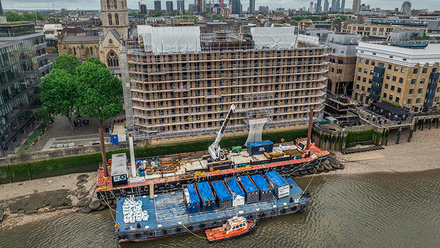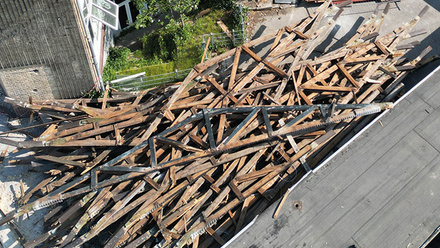Evolving structures - new Eurocode for composites
The Eurocodes represent a comprehensive set of standards for the design and construction of buildings and civil engineering works.

Conceived in 1975 by the Commission of the European Community (EC), the Eurocodes aimed to unify design and construction practices across Europe while eliminating technical trade articles.
The Eurocodes have evolved through meticulous development, officially endorsed in 1989 by the European Committee for Standardization (CEN) and comprising 10 parts tailored for traditional materials like steel, concrete and masonry.
However, the industry’s evolution in material science and technology highlighted the need for a dedicated Eurocode specifically tailored to fibre-polymer composites, signifying a growing acceptance of novel materials in the market.
The Eurocodes have undergone revisions from 2010, resulting in the second-generation of codes being published in 2023, notably including the CEN/TS 19101: Design of fiber-polymer composite structures. This technical specification, evolving into a Eurocode after a two-to-three-year trial period, focuses on designing various civil engineering structures using composites – ensuring safety, serviceability and durability.
It encompasses a wide array of composite structures, including profile and sandwich panels; joints like bolted, bonded and hybrid connections; and extends its applicability to diverse structural systems across 34 CEN countries. Despite being in a testing phase, it is already available for purchase and evaluation across the EU, undergoing thorough validation before achieving official Eurocode status.
Why is this significant?
A dedicated composite Eurocode introduces a standardised framework for designing composite structures, equipping engineers with streamlined guidelines and elevating composite materials as credible options.
Such recognition inspires designers to explore composite possibilities across applications. Anticipated outcomes include increased market penetration. Despite composites representing only 1% of the €192bln market in hardware and building materials, amounting to €2.16bln, the Eurocode’s implementation is set to stimulate growth by instilling confidence among professionals.
To meet the demands of the technical specification, robust quality assurance processes are needed. The EC has authorised TC250 WG4, the workgroup authoring the TS 19101, to develop an execution standard for fibre-reinforced polymer structures. This ensures that products meet the required standards of safety, serviceability and durability. Consequently, formalising these design standards will enhance the credibility of composites as a viable option for structural applications.
Changes to the Eurocodes will foster international collaboration, harmonise standards, simplify trade and catalyse expertise exchange in the composites sector. This collaboration will enhance competitiveness in the global market, ensuring products and services meet universally accepted criteria.
The introduction of the Eurocode for composites therefore marks a significant stride in construction and engineering, solidifying the credibility of composite materials.
It invites engineers, designers and manufacturers to explore the limitless possibilities in composite materials, envisioning structures that prioritise safety, sustainability and resilience.
This initiative includes the development of two crucial resources – a detailed 1,000-page commentary providing extensive justification for the technical specification’s content, and a book featuring 14 detailed worked examples – a valuable resource for educators and engineers. This offers a comprehensive framework to explore the potential of composite materials, enabling the creation of secure structures. The digital publication of these documents is expected in 2024.
Now, more than ever, the time has come to champion this transformative journey across the construction industry. It is a resounding call to action, an impassioned plea to all stakeholders to embrace the Eurocode for composites.
We can build a future where innovative materials are at the heart of groundbreaking designs, where the ideals of safety and sustainability are seamlessly interwoven, and where our structures proudly stand as testaments to human ingenuity. The Eurocode for composites is not merely a collection of standards – it is an extraordinary opportunity to shape the world we inhabit.







